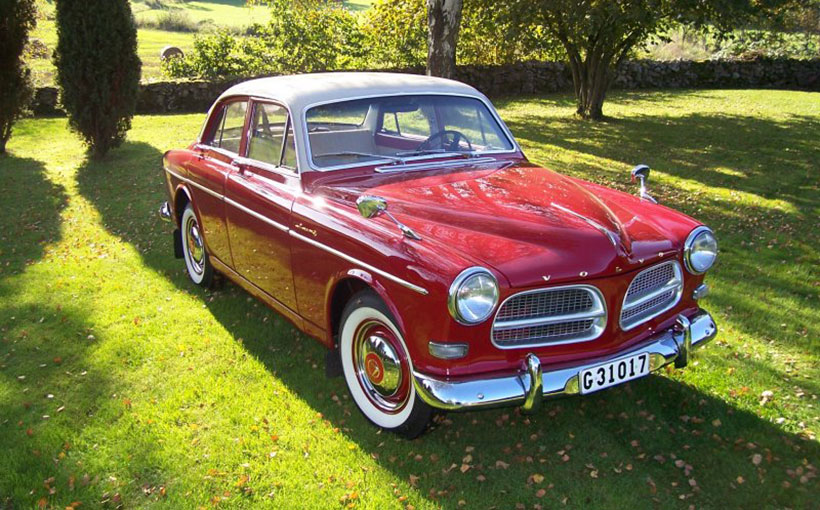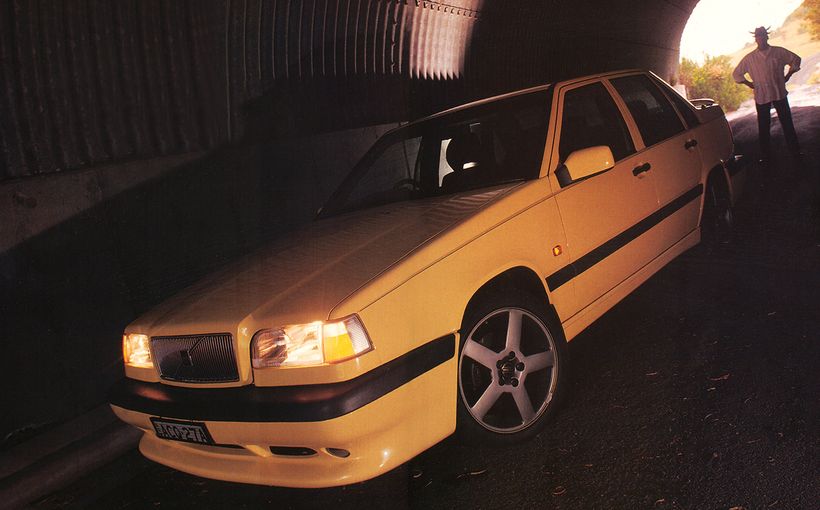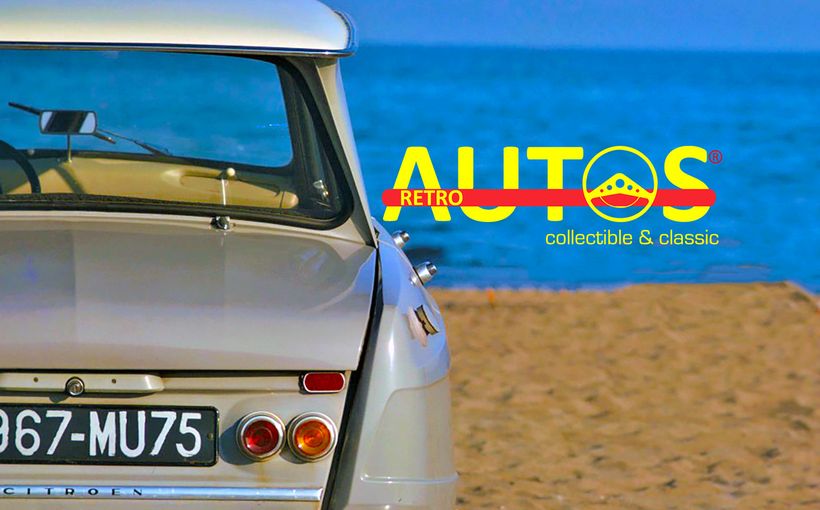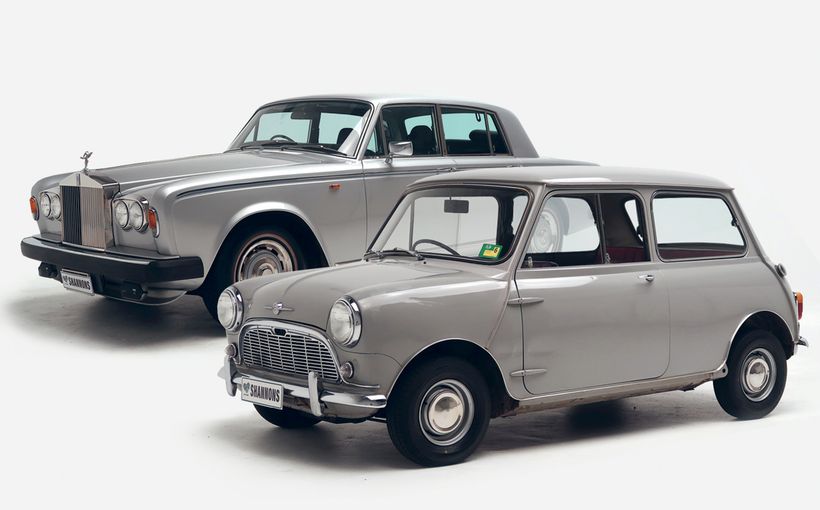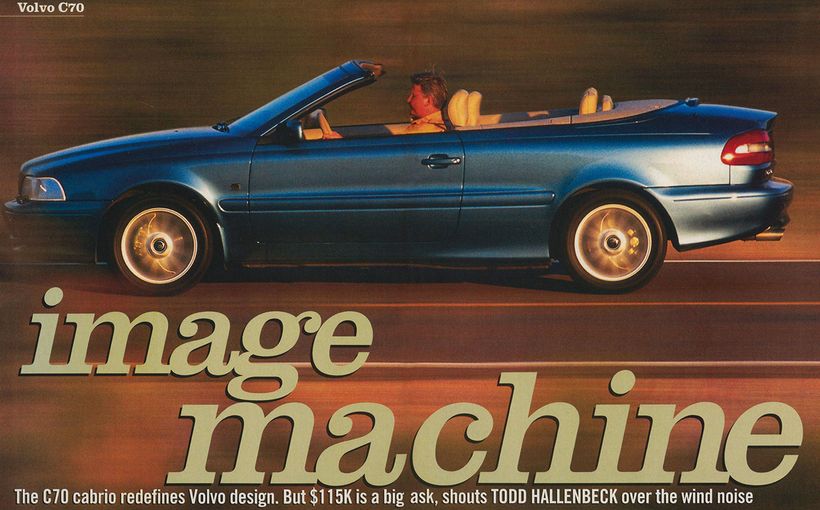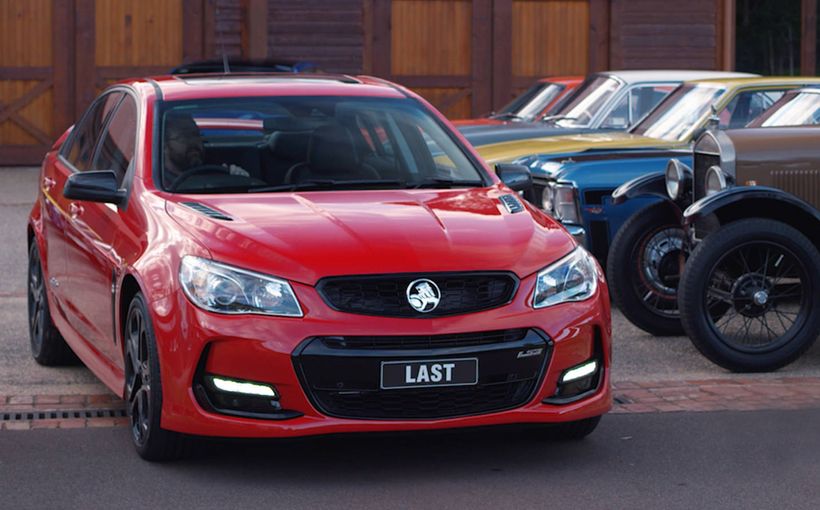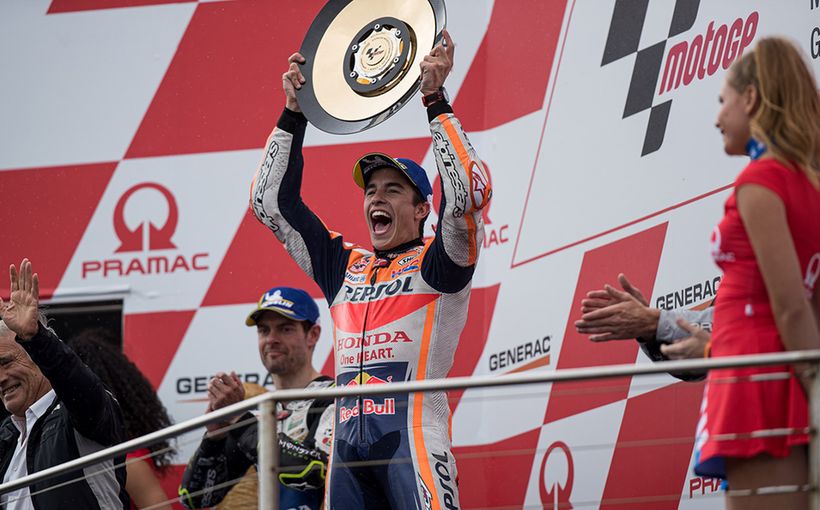1961-70 Volvo 122S/123GT: The Winning and Losing of Volvo’s Swede Spot
By
JoeKenwright -
14 January 2015

On its 1956 Swedish launch, the new Volvo 122 featured bright two-tone colour combinations, detailed brightwork and white wall tyres that were a league apart from sombre earlier Volvos. Although 122 flair lasted until 1970, the grim and conservative focus on function steadily clawed its way back into later models. (Photo from volvoamazonepictures.se)
At the September 1961 local launch of the Volvo 122S, Australians familiar with Swedish brands including Ericsson, Husqvarna, Hasselblad, Bahco and Electrolux, were open to the idea of a Swedish car. Because the Volvo 122 had been subject to five years intensive development following its August 1956 Swedish release as the Amazon, it quickly gained a local reputation for being the best and safest of its kind.
In total contrast to Volvo’s later image defined by its hesitant, hat-wearing owners, the 122S was highly desirable as a tough driver’s car with a sporty engine, exceptional comfort and outstanding roadholding over all Aussie roads.
It was no coincidence that the first Volvo model sold in Australia was so consistent with Australian requirements and priorities. Like Australia, Sweden has one of the strongest US car cultures outside the US in the world. There are several remarkable parallels between the fledgling car industries in Australia and Sweden from the 1930s into the 1950s. In fact, Sweden was often presented as a model to the Australian car industry of how to survive.

Volvo’s take on Chrysler’s airflow models was the PV36 or Carioca, Volvo’s flagship model from the mid-1930s. At the time, the company was intent on proving that it could match US advances when the Swedish public had such a wide choice of similar US models. (Photo from swedishfanatics.com)
Although the 122 and its PV444 predecessor were Volvo’s advance party for global exports, Volvo had an earlier history of producing sturdy low-volume, high-end models since 1927. Senior management at Sweden’s successful bearing manufacturers SKF saw an opportunity to exploit the country’s competitive advantages and expand activities by building cars.
The name Volvo had been chosen and registered to cut across language barriers for an export range of ball bearings until it was dropped so it wouldn’t dilute the SKF branding. Volvo is the Latin for “I roll”, the same Latin root in English words such as revolve, evolve and involve. It seemed just as applicable to a range of cars. Although coincidental, the company’s culture was to evolve and steadily perfect a range of models over unusually long cycles. And this is where Swedish and Australian industry histories crossed paths.

The cheaper, more conservative P52 model using parts from the P36 was introduced in 1937 and was more of a people’s car, despite its price premium. To Australians, it looks like a Ford Pilot with an earlier Prefect grille, suggesting that Volvo was also influenced by Ford at the time.(Photo from globalcarslist.com)
American manufacturers were well-represented as assemblers and distributors in Sweden prior to 1939. Like Australia, this shaped Swedish tastes and priorities. Early Volvos were clearly inspired by early Chryslers and later models were amalgams of late 1930s Chevrolet, Ford and Dodge styling. This was no coincidence either. Ivan Ornberg, a Swedish veteran of the US industry, was persuaded to return to Sweden in 1932 and define Volvo’s future. His influence on the engineering and styling of Volvos was extensive. Sadly, by 1936 he was dead but the culture he left behind ran deep.
Volvos up to that point tended to be tough, simple, long-lived, powered by flat-head sixes and better suited to Sweden’s cold and rugged conditions than their US lookalikes. The company culture was to start with basic engineering then refine it to work beyond its expected efficiency while minimizing the number of components that could fail under Sweden’s extreme temperatures. Although Australia’s temperatures were at the other end of the scale, the same priorities applied.

Until World War II intervened, the top shelf Volvo PV60 was meant to be launched in 1940 with styling that looked like a 1939 Ford rear combined with the front of a Chevrolet or Dodge of the same year. Like similar US models, it had to be held over until 1946 when it still looked quite smart for a European model. (Photo from minivolvo.lu)
As the end of World War II loomed in sight, Volvo, like many European companies, dared to think about what they might produce after 1945. The Volvo crystal ball revealed there would be a new war-weary mass market desperate for cheap and reliable transport.

When the Volvo PV444 first surfaced in 1944, it looked like a cheaper, smaller version of the PV60 with a more modern front except it had the latest unitary construction and a new overhead valve engine. It didn’t go on sale until 1947 as a result of Swedish industrial turmoil and material shortages. (Photo from curbsideclassic.com)
Volvo’s Stepping Stone – the PV444
Sweden was one of the few countries to maintain neutrality in World War II, a position later dependent on its own military build-up as a deterrent. As Volvo trucks played an important role in that build-up, Volvo engineers started laying the foundations for a Swedish people’s car in 1943. In contrast to post-war French and German efforts from Renault, Citroen and Volkswagen, the small 2-door Volvo was defined as a simple rear drive unitary construction design powered by an efficient pushrod overhead valve inline four cylinder engine.
Not only was this very similar to the first Holden on a slightly smaller scale, its styling based on US 1942 models was very close to the first Holden except for its rear profile. As an earlier design finalized in 1944, the PV444 featured the “sloper” rear styling of US 1939 models similar to the Peugeot 203 and Standard Vanguard. When it was first revealed later in 1944, it generated the predicted stampede of orders. Yet deliveries wouldn’t reach these first customers until 1947.
Swedish metal workers, who had been the backbone of SKF’s low cost success story, went on strike in 1945 and crippled the country’s manufacturing for an extended period. To meet the 1944 orders, Volvo had to source steel from the US, delaying PV444 production until February 1947. As production geared-up with Swedish steel back to normal, order taking then had to be stopped in 1948 to allow production to catch-up. Again, there are parallels with the first Holden which, after 1948, generated waiting lists that extended for years.

To service the lucrative taxi and hire car business after World War II, Volvo kept building its PV831 full-chassis range facelifted with a similar nose to the PV444 after 1950. The close resemblance to Ford’s later F-series models at the front provides a clue to their tough light truck mechanical layout underneath.
Full chassis versions of the PV444 and a larger sister model PV831/832 with similar front styling were produced for taxi, limousine and light truck applications from 1950 until 1958. It was these vehicles that funded the new production lines, proving ground and factories needed to build the 122 under the required economies of scale.
Again, there are parallels with Holden which was undergoing a similar progression. The time frame for Volvo’s first all new shape since 1947 was locked in for 1956, the same as the
FE Holden. A key departure in strategy was Volvo’s decision to export the ageing PV444 to the US from 1955 leaving Volvo with two model ranges in 1956.
Volvo’s early rally efforts in the PV444 then became more serious and more important in this context after Gunnar Andersson took out the European Championship in 1958 and the Grand Premio International in Argentina in 1960. These were important developments as Volvo production commenced in Canada and Chile not long after.
The ageing PV444 struck a chord amongst US buyers to such an extent that it remained in production alongside the 122. It was too good to kill and was facelifted as the PV544 in 1958 then continued in production until 1965 inheriting most 122 improvements along the way! It was not surprising that the PV444 was the starting point for the 122 as it was far more modern and refined under its ageing skin than many cars of its type.

Although this clay appears to have been prepared for the 1965 grille change, the shape was a radical departure for Volvo and much of Europe in 1956. It changed even less between 1956 and 1970 than the VW Beetle. Outside the Eastern bloc countries, it must go close to setting some sort of record for unchanged panel work over this period of annual changes.
The Volvo 122 Amazon
Volvo management in the meantime thought they were on borrowed time with the 1947 PV444 after its introduction had been delayed three years. By the early 1950s, the rush was on to define a replacement.
Several design studies failed to define a replacement until 23 year old Jan Wilsgaard presented a proposal that reflected the second generation of post-1945 Italian, American and British models. Because the old guard at Volvo originally held his work in contempt, he was left to develop the shape after hours. Yet they couldn’t ignore the freshness of his work after other design studies failed to meet expectations. Even so, the bright two-tone colours and white wall tyres that were a hallmark of Wilsgaard’s first Volvo 122 models were seen as an affront to those who had delivered the earlier more traditional Volvos, which were usually black and plain.

After providing the starting point for the Volvo 122, the PV444 and its PV544 facelift shown here continued alongside each other until 1965! The styling and mechanical relationship between these two models was uncannily close to the VW Beetle and the Type 3 1500. Note the PV544 bumper extensions, later offered on the 122, so that US exports would be protected from the bigger and higher bumpers of US models.
It was based on an updated version of the PV444’s unitary construction and mechanical layout. A set of rear doors was the critical advance yet a two door version was just as important as an upward step for PV444 owners.
Its Amazon badge could only be applied in Sweden as a German moped manufacturer already had the rights to the name across Europe. The new Volvo nomenclature started here. In this case, the P120 was a four door sedan, the four door wagon was a P220 and the P130 was a two door sedan. This was the model code and did not appear in the badging except the engine choices which determined the third numeral and thus were common to the external badging and model code.

Chrysler’s crisp new styling for 1955 is often cited as the key influence that shaped the Volvo 122. Arriving only just one year before the 122 was launched, there was not a lot in common apart from the grille theme. (Photo from
gopixpic.com)
A one as the third numeral denoted the standard single-carburettor engine. If it had a twin-carburettor engine it was a 2. The 123 GT or model with the GT engine had a 3 as its third numeral in its model code. So a single carb sedan or wagon was badged as a 121 with a model code of P121 or 221, the twin carb versions were badged as 122S with a model code of P122 sedan or P222 wagon while the 123 GT or a later 122S with the GT engine were coded as P133 or P123 respectively. The earlier 122S 2-door sedans sold in Australia had a P132 code. Confusing? You bet. Volvo started again with a far more logical sequence with the 144, where 2, 4 and 5 as the last numeral simply described the number of doors.

The Facel Vega first appeared in 1954 and its pronounced step below the side window line had a strong influence on several European designs including the coming Rover P5. The side grille theme is uncannily close to the Volvo. (Photo from gopixpic.com)
Was the 122 a copy of any particular model? Developed in the 1954-55 period, there is nothing in particular that it can be linked to. Compared to the FE Holden from the same year, its high window line, cabin sitting above stepped pontoon sides, smaller glass area and humped bonnet are typically early-1950s, not mid-1950s. Yet that step below the 122 glass line would survive as a Volvo feature for almost 40 years, a good enough reason for Volvo to revive this look on more recent models as a point of difference.

The idea of split grilles divided by a painted centre spine was a distinguishing point for pre-1940 Lincolns, a trend that Swedish designers would have been very much aware of. (Photo from barrett-jackson.com)
The 122’s proportions and balance were very close to Rover’s P5 4 Door Coupe (and today’s Chrysler 300C). This was not entirely coincidental as Rover P5’s engineers and designers led by Spen King and David Bache were inspired by Chrysler’s work with Ghia during the P5 period. These shared design influences later allowed the Volvo 122 to comfortably share Rover showrooms across most of Australia!
The front panel that contains the 122’s unusual grille below the bonnet is a separate pressing which joins each front guard under the headlights. Because it was easily tooled at the last minute, it is fair to conclude that the 122’s unusual split grille was influenced by the 1955 Chryslers. It wouldn’t be the first time that a Volvo showed strong US influence especially Chrysler. Yet Chrysler wasn’t the first with that feature either. The split grilles distinguished Lincolns before World War II which might explain the elegance about the shape that was timeless.

Fit and finish on the Volvo 122 was always judged to be exceptional, no easy feat given the complexity of the panels and curves. It also required a fair amount of hand-finishing which created bottlenecks until Volvo’s new plant came on line in 1964. (Photo from volvoamazonpictures.se)
Why bring it to Australia?
In the 1956-57 specification you wouldn’t have bothered. The early 122 was leaky and particularly rust-prone even after this needed to be its main strength for such a cold climate car, the steering column mounting wasn’t as rigid as it should have been, it had 6-volt electrics and a willing but underspecified 1.6-litre engine mated to a three-speed manual with no-synchro on first.
Volvo also had trouble with the early brakes so by the end of 1957, there were major brake and body structure improvements. The improvements that followed would fill pages as Volvo developed the car on the run. A key difference between Volvo and Holden in those days was that Holden built most of its parts internally or supervised their manufacture by preferred suppliers, all local.

Another shot highlighting the complexity of the Volvo shell and the extent of the manual labour involved. (Photo from volvadventures.com)
If Holden had a problem with a part, Holden representatives would be on the supplier’s doorstep immediately with supply contracts on the line if it wasn’t fixed. Volvo had to shop across Europe and the UK to build the 122. There was always a time lag to address design or manufacturing problems at a parts supplier.
If you were forced to define the moment when the 122 performed to expectations, the improvements that applied from 1961 marked the point where you would take a second look. Holden didn’t have that luxury and the FE had to be right for its release in 1956, give or take a few minor glitches that only showed up under extremes.

After Rover drew on Raymond Loewy’s Studebaker work for the P4, the company’s designers drew on Chrysler’s work with Ghia and the Facel Vega to create the P5 that was remarkably similar to the Volvo 122. Both models would share the same showrooms across Australia under Regent Motors distribution after the 122’s local launch. (Photo from car-from-uk.com)
The Regent Motors Group which established Rover and Volkswagen in most Aussie states decided to add Volvo to the stable from 1961, importing a white evaluation example late in 1960 registered HGS 752 in Victoria. A Sydney transport company owned by endurance driver Peter Antill covered the Sydney and northern NSW regions outside the Regent Motors network. Showrooms filled with Beetles, Type 3 1500 sedans and wagons, Volvo 122s and Rover P4s and P5s offered a wide choice for buyers keen to escape the crushing presence of Holdens during this period.

When the Volkswagen Type 3 arrived five years after the Volvo 122 was revealed with a relationship between it and the Beetle close enough to that between the 122 and PV544, it is highly likely that the 122 was an inspiration. As this model was also part of the Regent Motors showroom line-up from around the same time in Australia, it didn’t matter! (Photo from leehedges.com)
By 1961, the Volvo 122 had reached a standard where it could fill the critical gap in the line-up for those rural buyers who needed a bigger and equally rugged replacement for their Volkswagens but their budgets stopped short of a Mercedes-Benz.
The first Volvo 122S examples sold here from September 1961 were the Swedish 1961 model, just short of some of the biggest upgrades in 122 history.
Yet the 1961 model still had some useful advances that made it a good starting point for the local market. The big news was a bullet-proof four speed gearbox with a strong and direct central lever. The front bucket seats were improved to the point where they became a benchmark even if the best in that department was still to come. The back seat was lowered and widened to accommodate three growing children. New classy single-tone colours suitable for Aussie UV levels were also introduced.
Brakes were strong but still drums all round. The double wishbone front suspension and live rear axle with coils, trailing arms, locating arms and a Panhard rod would define Volvo rear suspensions for another 30 years. Australian Volvo ads claimed independent suspension all round but the rear trailing arms were definitely attached to a beam/live rear axle.
Yet it was the engine and relatively light weight (just over 1060kg) that provided the surprisingly strong performance and fuel economy. The 1600 in-line four with its twin SU-carburettors delivered 85bhp (56kW), a full 10bhp more than a Holden grey motor but slightly less torque. For an Australian market facing the underpowered local Morris Oxford/Austin Cambridge and Peugeot 403 ranges, the similar-sized 122S was a revelation. Against the EK Holden, it was no contest – in favour of the Volvo.
It delivered a top speed just short of the magic ton (160km/h) and standing quarter of around 20.5 seconds compared to 21.8 seconds and 83mph/136km/h for the Holden. Holden performance figures would continue to slide until the EH’s arrival in 1963. Yet the EK/EJ Holdens were usefully bigger in most areas so Holden wasn’t under any threat just yet.

Volvo’s first appearance changes since 1956 may have required an expert to pick them but they arrived barely six months after the model was launched in Australia. The wagon followed soon after.
At around $3000 (slightly more than the imported Peugeot 404 and local EJ Holden Premier), it also wasn’t cheap but it had a Benz-like quality about it. The outstanding build quality, feel of solidity, inherent weight balance (52:48 front/rear) and astonishing point to point speeds over all Aussie road surfaces could not be ignored by rural drivers. The Volvo 122S highlighted the extent of Australian protectionism. Without local tariffs, the Volvo would have cost the same as a base Holden or less. As a car that coped well with all local conditions, the 122S could easily have made the local industry redundant 50 years earlier.
Volvo in Sweden then seemed to find a second wind. Half its production became dependent on exports and Volvo was taking no chances so the gap widened between the local cars without a price increase. Australian deliveries after March 1962 were transformed, much to the annoyance of those who bought the first cars.

The passenger grab handle on this dash identifies it as a later version of the original design. Rubber mats, stout gear lever and clear instruments changed little over the 14 year model life. (Photo from getsomephotos.com)
The big news was the now legendary B18 engine with 1780cc and 90bhp/67kW and a five bearing crankshaft. Delivering performance even further away from a Holden and dropping the standing quarter below 20 seconds, it placed the 122S in an elite class for a family sedan in 1962, especially a four.
Front disc brakes were standard, the switch from 6 volt to 12 volt electrics was well overdue and a new front grille panel with a skinnier centre division and flusher, more modern grille sections with nine vertical bars changed the look of the 122 for the first time. Again, it was just the start. A bigger radiator and tougher front structure were particularly relevant locally. The B18 badge was added to the grille and tail.
For 1963, a two door sedan and a wagon joined the local range. After Volvo recruited Nils Bohlin to the safety department in 1958, Volvo not only invented the three-point safety belt but became the first manufacturer to fit them as standard in 1959. By 1963, front three-point seat belts were standard in all markets including Australia. For 1964, apart from better rust protection, green instrument lighting, revised boot handle and new dash padding, it was business as usual. The wagon was temporarily withdrawn.

Even in its 21st and final year, the PV444/544 still looked sharp especially with several of the 122 upgrades that it inherited. If you cover the panel work ahead of the windscreen, the resemblance to the VW Beetle is uncanny, a reflection of their shared late 1930s styling origins. (Photo from arc-goettingen.de)
The 1965 model year upgrade, which arrived here in December 1964, made 1965 another landmark year for the 122S with the introduction of Volvo’s renowned ergonomic seats. The 122 had to now cover the withdrawal of the older PV544 model and go it alone until the imminent new 144 series arrived, the first time Volvo was reliant on a single model range in decades. However, the 122 was a best seller in Sweden and exports were strong, no more so than in Australia.

With just the 122 holding the fort for a short period until the new 144 arrived, Volvo took no chances with the 1965 122S facelift for one of the best and most desirable Volvo sedans. It was quickly followed by an engine upgrade in 1966 that had local testers reaching for the superlatives again.
Other 1965 improvements included new eight slot wheel rims, new hubcaps with black centre V, new grille with three vertical bars and a Volvo emblem replacing the B18 badge, instrument panel grab handle, rear window demister ducts, a number of galvanised body parts, new rear mudflaps and new inner door hardware.
Yet Volvo would not leave it that. For 1966, there was a new brake balance valve mechanism that “balances front and rear brake pressure no matter how unequally the car is loaded.”?

After inventing the three-point seatbelt and fitting it as standard way ahead of other manufacturers, Volvo’s pioneering work on its front seats which were developed with medical experts established another benchmark in 1965.
The press release stated that the “race-proven B-18 D has four cylinders, a five-bearing crankshaft, fully machined combustion chambers, separate induction ports for each cylinder, and a full flow oil filter.” The 122S gained higher compression through a thinner head gasket and a B-spec camshaft helped lift performance. The twin HS6 carburettors were given a bigger air filter. Radials (165SR15) were now standard.
At this point, Wheels revisited the 122S and was staggered by the advances. For just $3158, the new 122S could now cover the standing quarter in 18.8 seconds courtesy of an engine now pumping out 95bhp/71kW, about the same level of tune as the MGB’s 1800 for similar performance.

The 122’s ability to survive serious impacts and allow its occupants to walk away prompted a Volvo safety emphasis that gave the company a real edge. It later bordered on the obsessional as other important areas were left unaddressed. (Photo from background-pictures.picphotos.net)
Again, there was little to fault about the car as fuel economy was still up to 50 per cent better than Australian sixes and the levels of internal safety padding and protection including lap-sash seat belts and safety steering column were unprecedented for 1965 at the price. Said Wheels: “We have not suddenly fallen in love with the make; ours has been a long and constant affair that will continue to stand the test of time.”

The 1967 styling changes were the last until the 122 was withdrawn in 1970. They also marked the short return of the wagon to the Australian market in 1967.(Photo from all-carz.com)
Transformed by Volvo 144
The new 144 arrived in Australia in April 1967 which had a profound impact on the 122 range. A heavily revised 122S four door sedan (new more open grilles made up of pairs of horizontal and vertical bars, brake booster, revised engine with new carburetors and air-filter, twin-branch exhaust manifold and power lifted to 100bhp/75kW) arrived in February 1967. Then the four door was gone by August, effectively replaced by the 144.

The safety steering wheel and cabin hardware of the last of the 122 models. This shot also highlights the later orthopaedic seating with its adjustable lumbar support. (Photo from oldclassiccar.co.uk)
The equally revised wagon made a return appearance in February 1967 along with an upgraded two-door sedan. However, the wagon was also gone by the end of 1967 leaving the two door 122S sedan to plug along as the sporty alternative to the 144 until July 1970.

A close-up of the grille detail of the final 122 series powered by the B20 engine developed for the 144. Although its extra torque and horsepower were useful in the lighter 122S two door sedan, it wasn’t the sweetest 122 engine.
For 1968, the 122S gained a safety upgrade picked mainly by the four spoke steering wheel, anti-glare wipers and plastic windscreen washer nozzle.
The 122S was then allowed to exit on a high picking up the 144’s B20 engine in March 1969. Bored out to 1985cc, the B20 B version produced 118bhp/88kW and was now shared with the GT, effectively making the GT redundant in Australia where few, if any, of the 1969 123 GTs were sold. During this period, Volvo standardized some cabin hardware with the 144 and applied the 144’s diagonally split-braking system.

The last 122S was offered only as a two-door sedan. Sharing the same B20 engine as the 123GT, it effectively made the pricey 123GT redundant in Australia. The new head restraints on the final examples were some compensation for the loss of the GT’s tacho and auxiliary lights which had become fog lights only in other markets.
As global requirements were rapidly converging, Volvo fitted adjustable head restraints from July 1970, ahead of Australian legislation, then withdrew the two door 122S by December 1970. Not only was this driven by events in Sweden but it was also hastened by the imminent local assembly of the 142/144 series at Volkswagen’s Clayton facility near Melbourne which was about to create pricing issues with the imported 122. The last 122 examples were built in South Africa in 1971.

The 123 GT effectively offered a slightly detuned version of the P1800 engine, P1800 sports suspension, upgraded Recaro front seat adjustment, tachometer and auxiliary lights in the two-door body. Oddball Japanese-style twin mirror arrangement was often supplied unfitted.
The Classic Volvo – the Rare 123GT
In 1967, Volvo created the Holy Grail version of what Australians knew as the 122. Called the 123GT, it came as a two door sedan only and was launched as part of the local February 1967 upgrade. More than an engine upgrade, it was a package at least as comprehensive as any rival which wore the GT badge. Because its all road cross-country ability was another notch above the 122S, the 123 GT set new benchmarks.
The engine was a B18 B but this time with a C-specification camshaft. It was basically the P1800 unit without the oil cooler with an output of 115bhp/86kW with more grunt easily liberated with even minor tuning. It was mated to the M41 four speed manual gearbox with the British Laycock de Normanville overdrive Type D, a specification familiar to Australians exposed to the MGB, various Triumph TR models and the big Austin-Healeys.
Suspension was upgraded to the P1800 “blue” spring specification with heftier rear suspension bushes.

The 123 GT dash in 1967 was off the pace at the GT’s hefty price with its old school horizontal gauges and add-on Smiths tacho. Although the first Cortina GT and the HK Monaro GTS offered something similar, other European cars and Australia’s XR Falcon GT were doing it much better.(Photo from all-carz.com)
Inside, there were special seats with chrome Recaro reclining mechanisms, special dash pad with storage compartment on top, dash-top Smiths tacho (with a chrome ring and red needle) and a distinctive GT three-spoke steering wheel with centre GT badge. Horns and wipers were upgraded.
Outside, there were twin auxiliary lights, both Hella 162mm except one was a driving light, the other a fog light. Lights were fitted inside the engine bay and boot. An alternator was fitted to cover the extra electrical loads with the anticipated competition use. Wiring and fuse box were upgraded.
Wheel dress rings mimicked the shape of the wheel (XR Falcon GT anyone?) with a polished finish and matching slots. Standard tyres were Pirelli Cinturato P3 on stock rims. Two round mirrors on the front guards were standard but not always supplied fitted. There was a chrome exhaust tip.
Official colours were limited to cherry red, pearl white and dark green. However, steel blue metallic, dark blue and turquoise were available. Canadian-built 123GTs were seen in a light blue and green.
Less than 1500 were built over the 1967-69 period and only 50 reached here with just 35 surviving making it not only desirable but rare (source: volvo1800-120parts.com.au). At $4160 it was expensive, or about $300 more than the XR Falcon GT as it was carrying full duty as an import. The standing quarter dropped to 17.8 seconds and top speed went up to 108mph/173km/h.

The 123 GT by 1968 had slightly larger auxiliary lights. Only 50 of the 1967-68 series were sold here with 35 still surviving making it one of the rarest and most desirable Volvos.
In December 1967, Wheels enthused again: “The 123GT Volvo caused more of a stir among the road test staff than almost any other car this year.” After suggesting that the 123GT would ruin a driver for anything else, Wheels concluded “We will have to go out and drive Holdens for a while to restore our sense of values.”
For 1968 not much changed except the Smiths tacho was given a soft silver surround instead of chrome as part of the anti-glare package and a white needle. The scale was changed from 100rpm to 1000rpm increments. The trademark Volvo lumbar adjustment was added to the Recaro fittings on the GT seats. The Hella lights were increased in size to 164mm.
By 1969, the 123 GT became a variation of the 122S sharing the same B20 B powerplant, the passenger’s side exterior mirror was dropped and both auxiliary lights became fog lights. Volvo’s attention had well and truly shifted to the 142/144 series which was selling up a storm.

The 1971 facelift of the 144 series was one of the last Volvo sedans that had stand-apart looks for all the right reasons. The diagonally split dark grille and subtle detailing was a short reminder of what Volvo was once capable of. (Photo from favcars.com)
Conclusion
After Volvo and its Saab rival were held up as examples for the Australian industry to mimic, Saab has gone without trace and Volvo is now owned by the Chinese. So what happened?
Around 1965, Volvo had a golden global reputation and a presence ahead of BMW, not too far behind Mercedes-Benz. Nor was it alone in refining a proven, older model. Volkswagen, Mercedes-Benz, Rover and Citroen were enjoying commercial success with a similar strategy.
At exactly the right time, just as the 122 was coming off peak production, Volvo generated the 144. Like the 122, the 144 was more of the same and based on what came before it. Its extra cabin size and boot space reflected the needs of growing families. It was hugely successful on release and faced a second growth spurt when it was the right car in the right place during the 1970s oil crises.
Yet the 144 was also the model that probably did the most long term damage to Volvo.
Its shape, even by 1967 standards in Australia, was crushingly conservative. Compared to the Peugeot 504 and a flood of new BMW models, its style did not move the bar over the cheap Cortinas, Hillman Hunters and lookalike Japanese models of the era.
Bulkier than the 122, the 144’s extra 160kg and the stretched B 20 pushrod engine were not an ideal combination especially if optioned with the increasingly popular Borg-Warner Type 35 automatic. Compared to the willing early B16 and B 8 engines in the 122, the 144’s hard-working B20 too often drove and sounded like a tractor.
Between the conservative 144 styling, more ponderous handling and the old pushrod engine, Volvo’s driver’s car image evaporated not long after release. This was not helped by Volvo’s adherence to a rectangular instrument package at a time when “driver’s cars” were presenting inspired new dash layouts based on round instruments.
By 1970, BMW was delivering some brilliantly-engaging driver’s cars that doubled as family transport. Audi and Volkswagen would soon emerge as real threats. All had sophisticated overhead cam engines. Both Toyota and Nissan had small but sweet inline sixes in a rapidly improving range of models aimed fair and square at Volvo.
Volvo’s 1971 facelift gave the 144 the distinctive face it deserved and local assembly gave it the price relief it needed in Australia. The top shelf 144 GL with fuel injection addressed several driveability issues but it still felt like an old car from behind the wheel.

This final facelift of the 144 series seemed to make an “in your face” feature of its dodgem car capabilities. The classy detailing was still there but it was overwhelmed by the unspoken statement that safety at all costs was the new priority.
Volvo then promoted its 1972 VESC safety study, the Volvo Experimental Safety Car. Not only was it incredibly ugly, it looked even more ponderous and confirmed that Volvo was no longer committed to re-visiting what the 122 had established as a driver’s car.
It was at this exact point when BMW, Audi and a Mercedes-Benz compact were staking a claim on the 122’s achievements, Volvo needed to balance its safety message with fresh styling, better handling and a smoother, more modern engine. Instead, after a shipment of Volvos ended up in the ocean, Volvo stacked seven of the water-logged cars on top of each other to highlight their roll-over strength.

No company with the slightest concern for its image as a car for discerning drivers would have ever allowed this monstrosity to see the light of day. To then graft this front onto the 1967 144 now way past its use-by date to create the new 1975 244 model was a long term corporate death wish that Volvo has yet to fully recover from.
For reasons best known to Volvo, the 144’s new plastic front in 1973 then revived the 1967 look. The big dodgem car bumpers added in 1974, not required in Australia or Europe, were not integrated in any way. A big bumper Volvo looked as if it was intended for drivers who bumped or hit things, not drivers who wanted a lean driving machine. By 1974, buying a Volvo could be seen as an admission that you couldn’t drive or someone in your family needed protecting from themselves.
Then Volvo did the unthinkable. It added the VESC front to the 144 rear. It didn’t matter how good the 244’s new overhead camshaft engines or rack and pinion steering were, Volvo had sacrificed style for a traffic survival cell. Volvo had defined its future as servicing the worst drivers around the world until legislation eroded this as a unique selling proposition.
Not surprisingly, even the worst drivers started shopping elsewhere to escape the Volvo labelling and are now just as likely to be driving a Toyota Camry or C-Class Mercedes-Benz. The death by a thousand cuts will still dog Volvo even under new Chinese ownership if Volvo’s ongoing attempts to reverse the damage continue to fail.
And the parallels with Australia? As local manufacturers gloated over incremental gains over each other, they failed to notice, like Volvo, that driving a big new Australian car was no longer cool.
Acknowledgements:
The writer has owned a 1976 Volvo 244DL Sedan, 1980 245 GL Wagon and 1990 240 GLE sedan. Even then, the lack of real progress over the 1976 model made little sense when rivals over this extended period made such big gains.
�
































